How To Catch Squid – The Only Guide You’ll Ever Need
Are you an avid land-based angler looking for a new challenge? If so, catching Squid is the perfect next step in your fishing journey! From understanding what size and catch limits are legal to knowing where to find them, this guide will cover all of the basics when it comes to landing these slippery creatures.
We’ll also share our tips on choosing the best bait and lures as well as how weather conditions can affect your chances of success. So get ready – let’s go catch some squid!
Disclosure: We only endorse products we’ve personally used or that have come highly recommended by our trusted peers. We’re proud affiliates for some of the products on our site, and as such, we may get a small commission if you purchase through one of our referral links. However, there’s no extra cost to you. Check out our affiliate disclaimer in our Privacy Policy if you’d like to learn more.
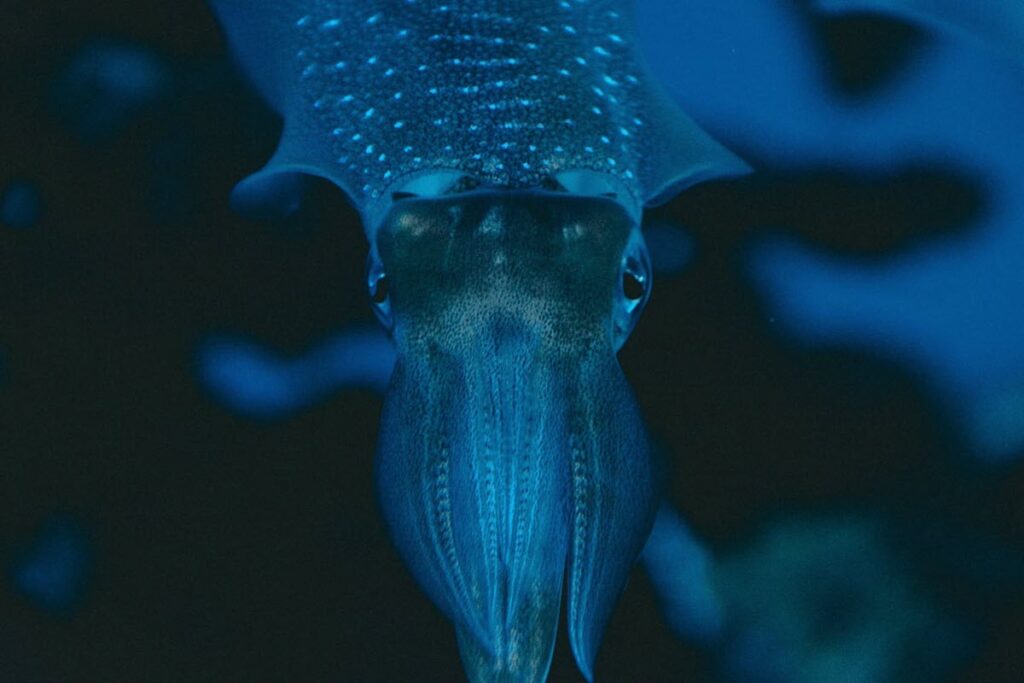
How To Catch Squid – Tip #1
Squid Legal Size & Catch Limit in NSW
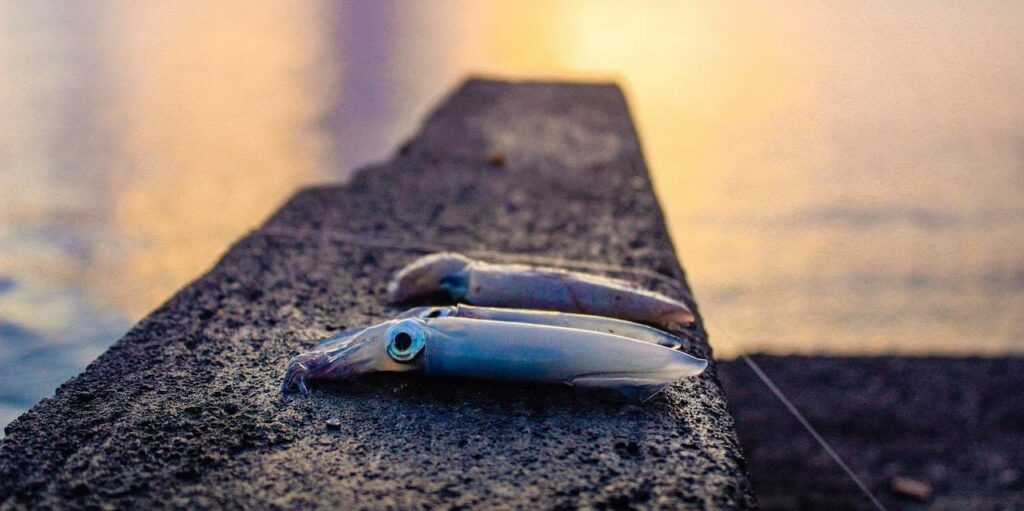
Squid fishing in New South Wales (NSW) is a popular pastime for many anglers. But before you head out on the water, it’s essential to understand the legal size and catch limit of Squid in NSW.
In NSW, there is no minimum legal size for Squid, but there is a bag limit of 20 per person.
It’s also important to note that there are certain states where fishing for Squid may not be allowed or restricted due to environmental concerns or other regulations set by local authorities. It’s always best practice to check the Department of Primary Industries website before heading out on the water so you can ensure you are following all relevant laws and regulations regarding fishing in your area.
Knowing the legal size and catch limit for Squid in NSW is vital to ensure that you’re fishing responsibly and sustainably. Now let’s take a look at how to judge the eating quality of Squid.
How To Catch Squid – Tip #2
Eating Quality of Squid

Squid is a popular seafood choice for many anglers, and it’s easy to see why. Not only is Squid delicious, but it also has a number of health benefits that make it an excellent addition to any diet.
Nutritionally speaking, Squid is high in protein and low in fat and calories. It’s also packed with essential vitamins and minerals like iron, zinc, selenium, phosphorus, potassium and magnesium. Plus, Squid contains omega-3 fatty acids, which are necessary for brain development as well as heart health.
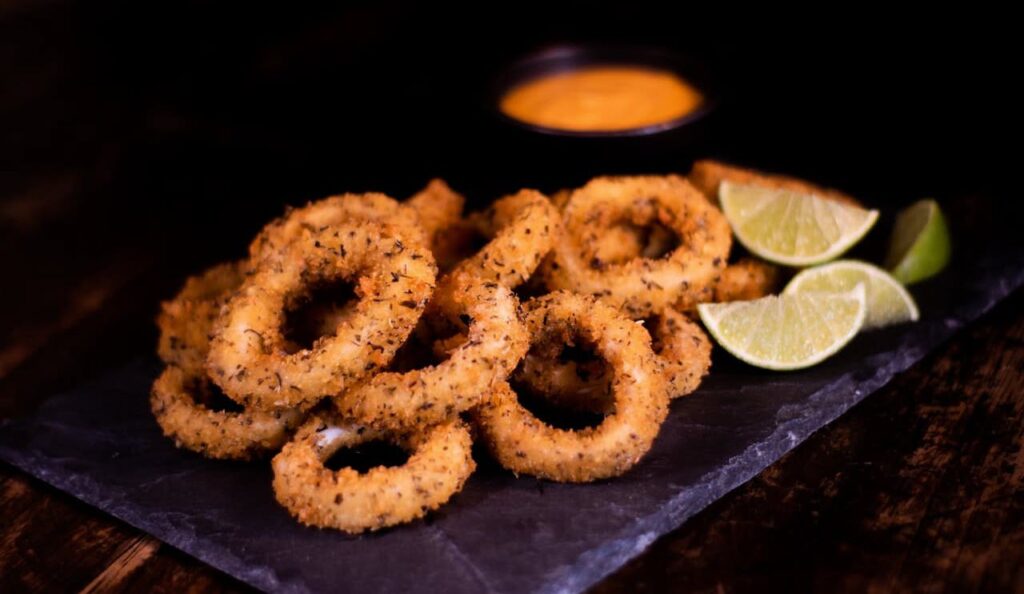
When it comes to taste, Squid can be prepared in a variety of ways depending on your preference. Grilled or fried Squid is often served with garlic butter or lemon juice for added flavour, while boiled or steamed versions are usually served with soy sauce or other sauces such as teriyaki sauce. Squid can also be used in salads or soups for an extra boost of nutrition without sacrificing flavour.
Overall, the eating quality of Squid depends on their freshness since they contain less fat than most fish. If not fresh enough, there won’t be much flavour left after cooking them up. Additionally, adding herbs and spices during preparation can significantly enhance their taste as well.
Key Takeaway: Squid is an excellent addition to any diet due to its high protein content and low fat and calories. It can be prepared in many ways, such as grilled, fried, boiled or steamed and adding herbs and spices will enhance the flavour. Freshness is vital for optimal taste.
How To Catch Squid – Tip #3
Methods and Tips To Catch Land-Based Squid
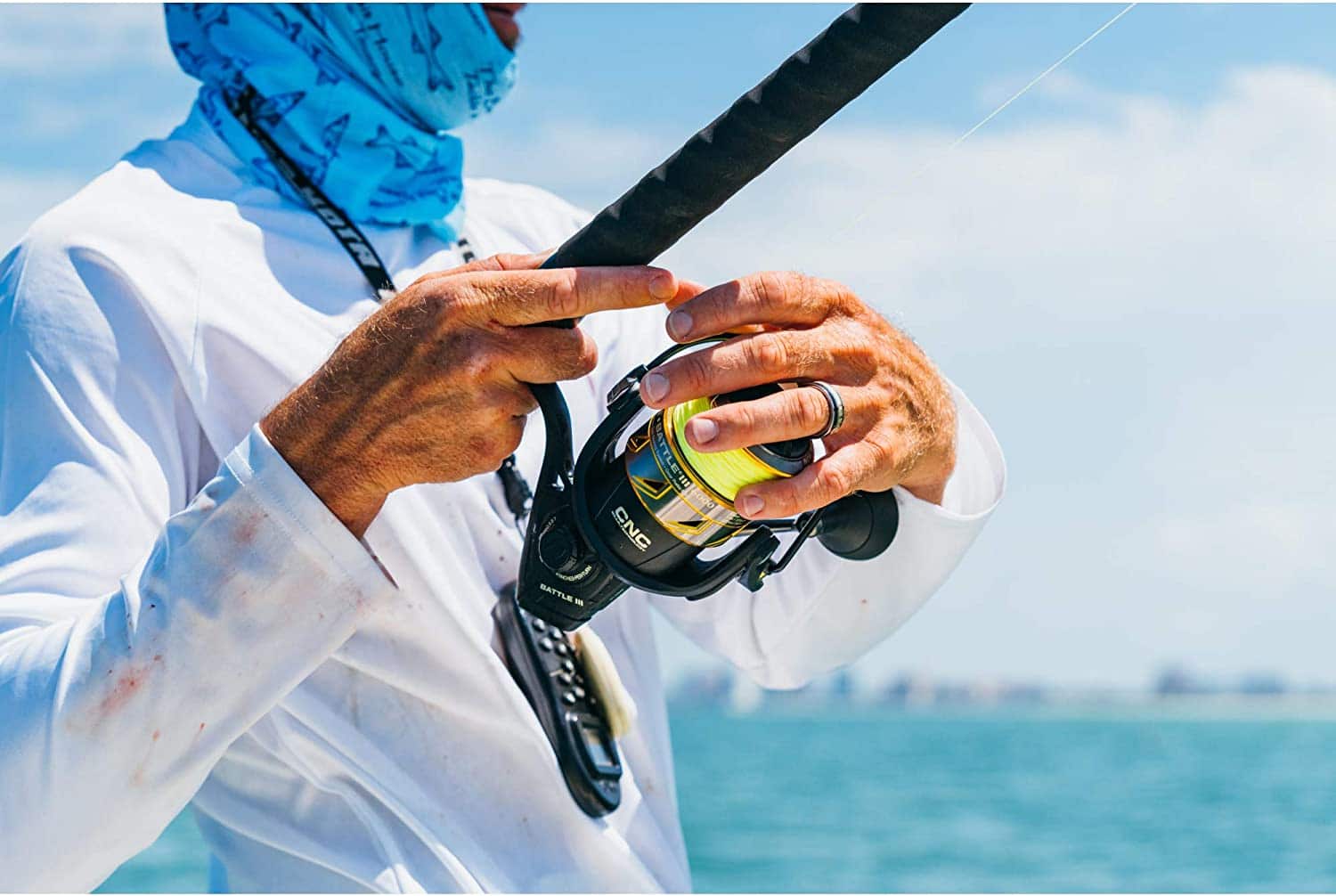
Land-based squid fishing is an exciting and rewarding activity that anglers of all skill levels can enjoy. Whether you’re a beginner or an experienced pro, there are plenty of tips and techniques to help you catch more Squid from land-based locations.
If you’re looking to catch Squid, the most reliable technique is using a squid jig with one or two rows of barb hooks. This is unlike fishing for other fish species, where a traditional treble hook and lure will suffice; instead, Squid use their arms and tentacles to entangle prey before dragging them towards their beaks. While it can prove difficult in practice, this method has been tested and proven effective time after time!
To catch Squid, cast your lure out and let it sink to a depth of 5–10 feet. Then, whip the fishing rod upward forcefully two or three times in quick succession; this imitates the movements of prawns that squid love to hunt. Once you’ve finished jerking, allow your lure to settle again for short periods – as hungry squids most often strike motionless lures!
Key Takeaway: To successfully catch Squid from land-based locations, use a squid jig with barb hooks and cast your lure out to the desired depth. Jerk the fishing rod up in quick succession to imitate baitfish movements.
How To Catch Squid – Tip #4
Where Can you find Squid?
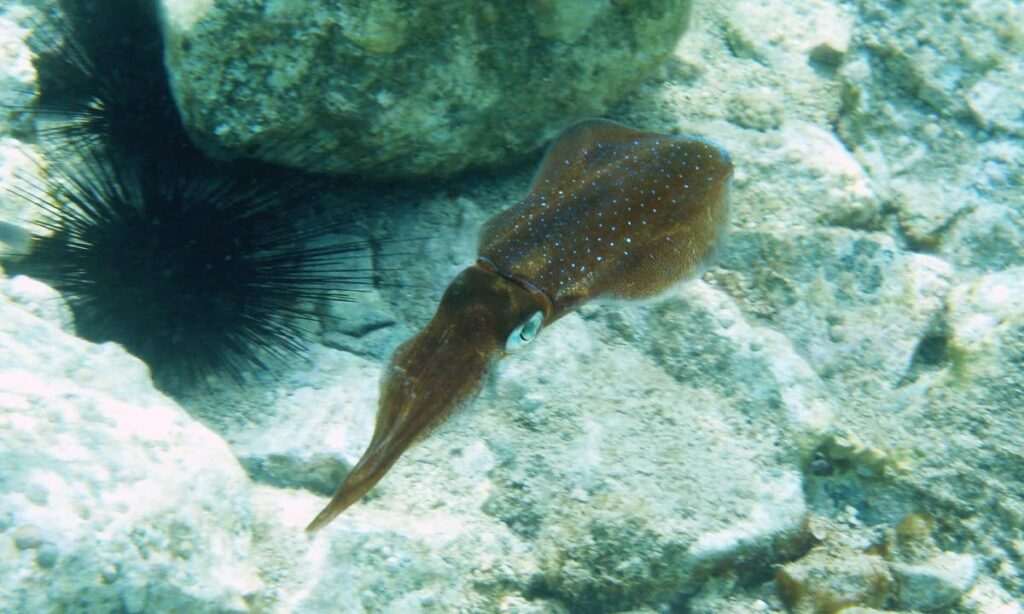
Squid can be found in a variety of environments, from shallow coastal waters to deep ocean depths. In Australia, they are most commonly found along the east and south coasts, as well as around Tasmania. Squid prefer areas with plenty of cover, such as rocks or reefs, where they can hide from predators. They also like areas with strong currents that bring them food.
Inshore Areas
Squid can often be found in inshore waters close to shorelines and estuaries during certain times of the year when water temperatures are warmer. These areas provide Squid with an abundance of food sources, such as small fish and crustaceans, which make them easy targets for anglers fishing from land-based locations.
Offshore Areas
Offshore waters offer some great opportunities for catching Squid too. Look for rocky outcrops or reefs where there is plenty of structure providing hiding places for Squid to ambush their prey. The best time to target these offshore spots is usually at night when Squid become more active and start feeding on smaller baitfish attracted by lights placed near the surface of the water.
Tidal Zones
Tidal zones between sandbanks or mangroves are another great spot to find Squid since they tend to move up into shallower water during high tide periods looking for food sources before retreating back down into deeper channels at low tide periods, again seeking shelter from predators.
Harbours and bays
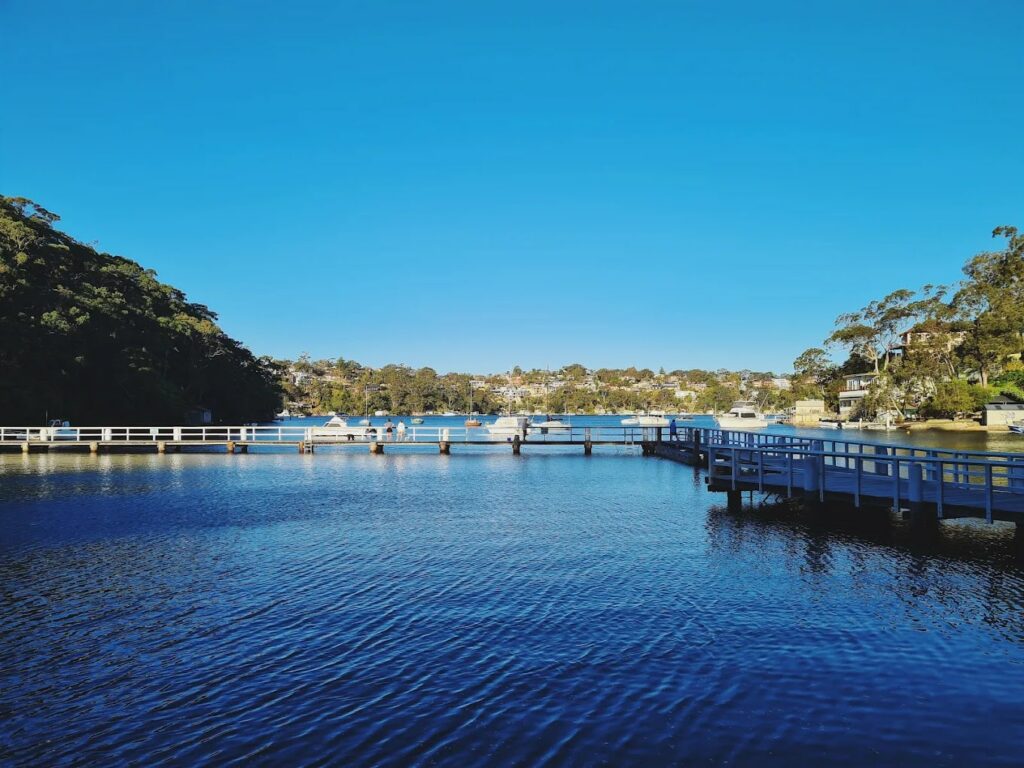
Harbours and bays provide ideal habitats for many species, including Squid, due to their sheltered nature. This makes it easier for them to find food while avoiding predation by larger fish species, such as sharks or tuna, that may inhabit open ocean regions further away from shorelines. As a result, harbours and bays are popular spots among land-based anglers who want an easy way to access prime fishing grounds without having to venture far offshore themselves.
Once you know where to look, it’s time to figure out what bait will attract the Squid. There are a variety of options available, and each has its own unique advantages. Read on to learn more about the best baits for catching Squid.
Key Takeaway: Squid can be found in a variety of environments, from inshore to offshore and even tidal zones. To catch them, look for areas with plenty of cover, such as rocks or reefs, strong currents that bring food sources, and harbours bays that offer sheltered habitats. The best times are usually at night when Squid become more active.
How To Catch Squid – Tip #5
What are the Best Squid Fishing Spots in Sydney, NSW?

Sydney, NSW, is home to some of the best squid fishing spots in Australia. Whether you’re a beginner or an experienced angler, there are plenty of places to cast your line and catch some squid. Here are our top picks for Sydney’s best squid fishing spots:
1. Balmoral Beach: Located on the northern side of Sydney Harbour, Balmoral Beach is a popular spot for catching Squid due to its shallow waters and abundance of baitfish. It’s also easily accessible by car or public transport, making it ideal for those who don’t have their own boat. The beach has plenty of rock pools that can be fished from shore as well as deeper areas where boats can access further out into the harbour.
2. Manly Cove: This sheltered cove located at the entrance to Sydney Harbour offers excellent opportunities for land-based anglers looking to target Squid with jigs and baits, such as pilchards and prawns during summer months when they come close inshore in search of food. It’s also a great spot if you’re looking for other species like bream, flathead or even snapper.
3. Watson Bay: Located at the southern end of Sydney Harbour near South Head, Watson Bay is one of the most popular destinations among recreational fishers targeting calamari (Squid). During winter months, this area offers some of the best squid fishing opportunities in the harbour, with plenty of rocky bays and coves to explore.
4. North Bondi Beach: One of Sydney’s most iconic beaches is also home to some fantastic opportunities when it comes to catching Squid off the shore during late spring/early summer periods when they move closer inshore in search of food sources such as small fish and crustaceans – perfect targets if you’re using lures. You’ll find plenty here, along with other species like bream, so make sure you bring your tackle box.
5. Rose Bay Marina, situated on the eastern side towards Double Bay within Port Jackson (Sydney Harbour), provides ample opportunity for both land-based fishers casting lures from rocks along its foreshore and boat-fishers heading out onto open water. Larger schools of Squid tend to congregate in this area seeking shelter amongst submerged structures like reefs and wharves, making it an excellent spot for anglers looking to target them.
The waters around Sydney offer some of the best squid fishing in Australia, and with a bit of knowledge and practice, you can be sure to find plenty of them. Now let’s look at what time is best for catching Squid.
Key Takeaway: Sydney is home to some excellent squid fishing spots, including Balmoral Beach, Manly Cove, Watson Bay, North Bondi Beach and Rose Bay Marina are perfect options for both land-based anglers and those fishing from boats. Each spot offers unique opportunities depending on the season and conditions.
How To Catch Squid – Tip #6
What’s The Best Season To Catch Squid?

Squid can be caught all year round, yet the most fruitful periods are usually in late Fall and Winter – when cooler water temperatures cause them to become more active. With that said, the best times to catch Squid are generally in the evening hours, mainly when there are calm and clear waters.
Tide times also play an essential role in determining when you should go out and fish for Squid. The ideal tide for catching Squid would be a rising or falling tide with moderate currents; this will bring more food sources into the area, which will attract more Squid. It’s also important to note that different species of Squid have different preferences, so it’s worth doing some research before heading out on your trip.
Key Takeaway: The best time to catch Squid is usually in the evening hours of late Fall and Winter when cooler water temperatures cause them to become more active. Tide times also play an important role in determining when to go out squid fishing, so make sure to do your research beforehand.
How To Catch Squid – Tip #7
What’s The Best Rod To Catch Squid?
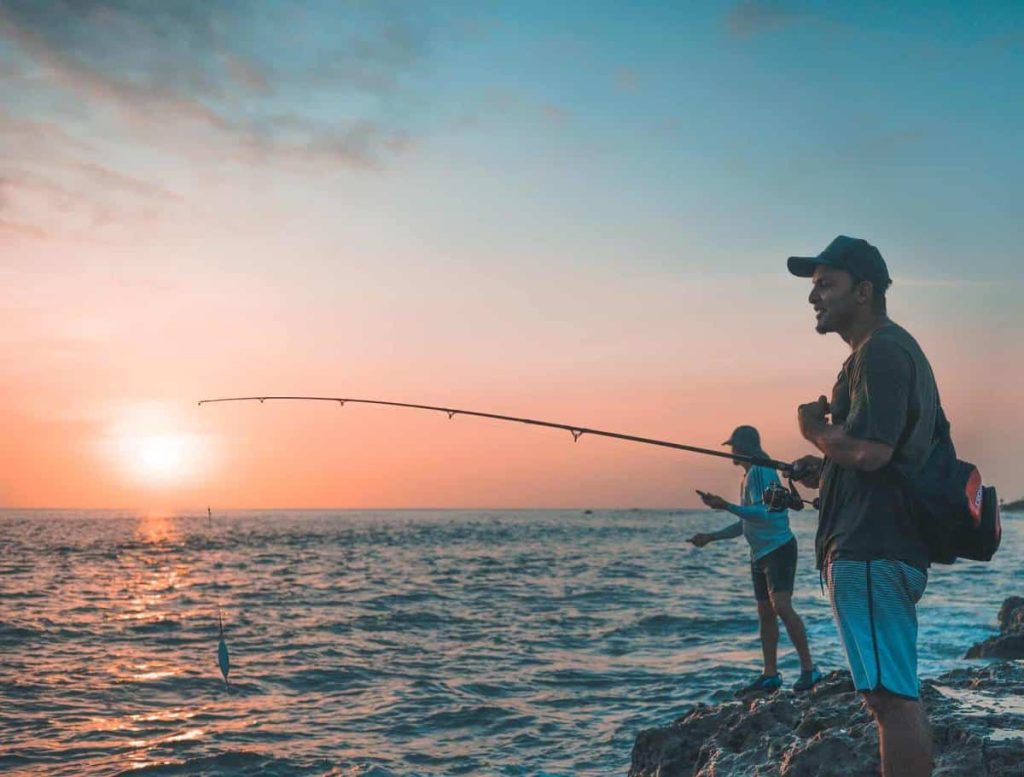
When it comes to catching Squid from land-based locations, the right rod is essential. The ideal spinning rod should be between 7 and 8 feet in length with a fast action rating of 10lb test. This will give you enough power to cast your line out far enough while still providing the sensitivity needed for detecting bites.
For brands, we recommend Daiwa, Shimano, Penn and Okuma, as they all offer quality rods designed specifically for this type of fishing. For example, Daiwa’s 8’3″ feet Emeraldas X EGI Squid Spinning Rod, with medium light action, is an excellent option.
Similarly, Shimano offers their popular Sephia BB EGI series, which is an 8 feet spinning rod with medium light action, perfect for the job.
Penn also has some great options, like their 7ft Conflict 702L Micro Jig Rod, which has a fast action and is designed to be incredibly sensitive when detecting the softest of bites.
No matter what brand you choose, make sure it meets your needs in terms of length and power ratings so that you can get the most out of your fishing experience.
From the type of rod to use to the best bait for Squid, there are many considerations when it comes to successfully catching Squid. Now that you have a better understanding of what makes up a good setup for land-based squid fishing let’s take a look at where you can find them.
How To Catch Squid – Tip #8
What’s The Best Reel To Catch Squid?
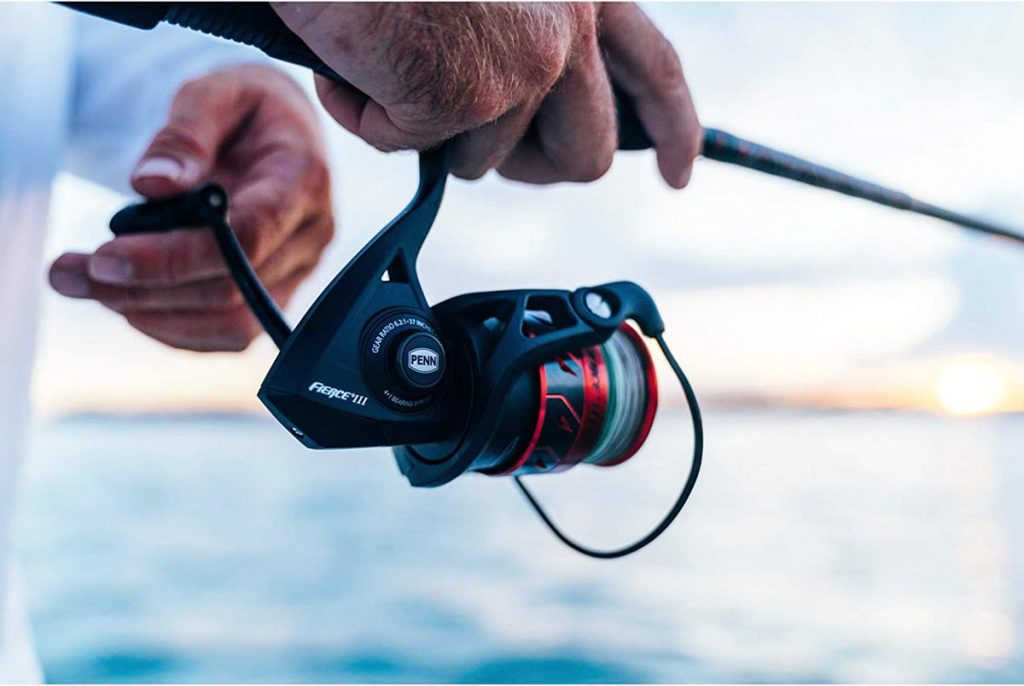
When it comes to choosing the best reel for catching Squid from land-based locations, there are a few key factors to consider. The size of the reel is essential; ideally, you want size 2500-3500 for inshore fishing. This size is perfect for casting out your line and retrieving Squid without any major hassles.
The drag rating of your reel is also essential; ultra-light drag ratings of 10lb are recommended, as the bites from Squid can be very light. The line capacity of your reel should be between 120 metres on braid, depending on the size of the Squid you are targeting.
Some popular brands that offer quality spinning reels suitable for squid fishing include Daiwa, Shimano, Penn, Okuma and Abu Garcia.
The Daiwa LT range or the squid-dedicated Emeraldas range are great options. Check out Shimano’s Sephia BB or Nasci range, which offers the best design and performance. Penn has its Conflict II series, which is well suited for this type of fishing. Abu Garcia’s Black Max is also a great option, as it provides enough power and drag to effectively pull in a decent-sized squid.
Here are links to the recommended reels from each brand:
- Daiwa 16 EMERALDAS 2508PE-H Spinning Reel
- Daiwa Regal LT Spin Reel-RGLT2500D-XH
- Daiwa Legalis LT Spinning Reel
- Shimano 17 Sephia CI 4 + C 3000 SDH HG
- Shimano 21 Nasci
- Penn Conflict II Size 3000
- Abu Garcia Black Max
No matter what reel you choose, the most important thing to remember when fishing for Squid is to be patient and have fun. With the right lures, you’ll be sure to have a successful catch. Now that you have the right rod and reel in hand, it’s time to discuss some other gear you may need.
Key Takeaway: Finding the right rod and reel when it comes to squid fishing from land-based locations is essential for a successful catch. Look for rods that are between 7 and 9 feet in length with a fast action rating of 10lb test. For the reel, size 2500-3500 is ideal with a drag rating of 10lb and line capacity between 120 metres. Brands such as Daiwa, Shimano, Penn, Okuma and Abu Garcia are all excellent choices.
How To Catch Squid – Tip #9
What’s The Best Line for To Catch Squid?
Monofilament
Monofilament is a popular choice for squid fishing due to its flexibility and strength. It’s also relatively inexpensive, making it an ideal option for anglers on a budget. Monofilament lines are available in a variety of weights and sizes, so you can choose the one that best suits your needs. However, monofilament has some drawbacks—it tends to stretch over time, which can affect accuracy when casting or retrieving lures.
Braid
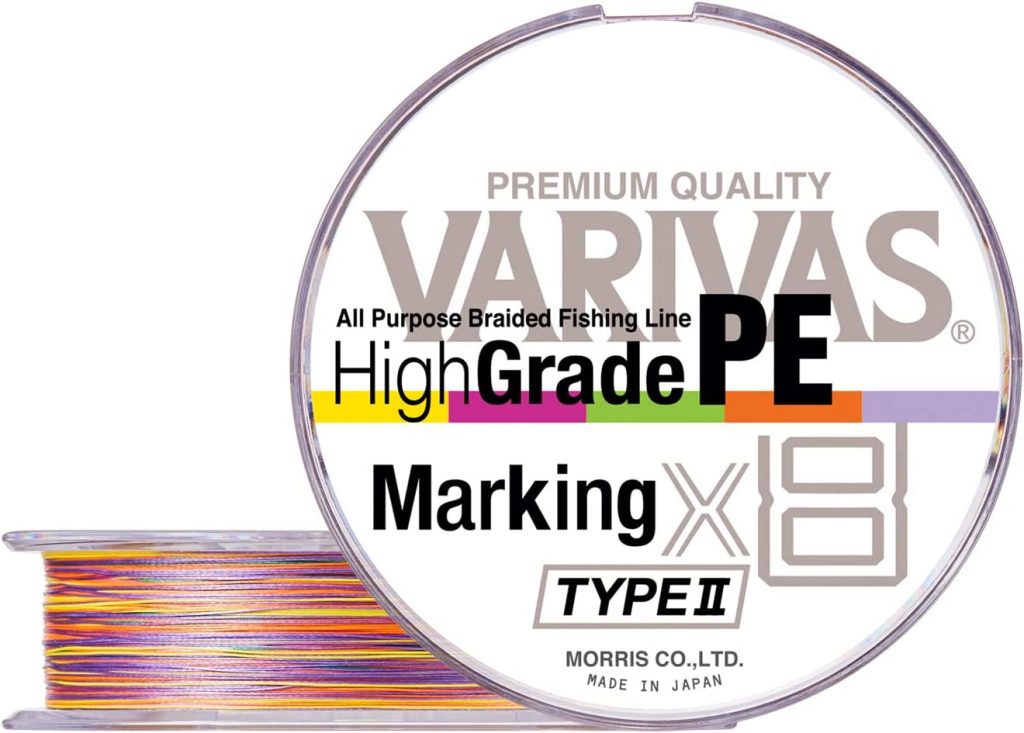
Braid is another popular line type used by squid fishermen. It’s made from multiple strands of braided fibres that are tightly woven together to create a solid yet lightweight line. Braid offers excellent sensitivity and abrasion resistance, making it perfect for targeting finicky squid species in shallow water or around structures where there may be more snags than usual. The downside of braid is that it can be difficult to tie knots with due to its slippery nature.
Fluorocarbon
Fluorocarbon lines offer superior knot strength and abrasion resistance compared to other types of fishing line, making them ideal for harsh conditions like rocky bottoms or heavy vegetation where you need extra durability from your tackle setup. Fluorocarbon also sinks faster than monofilament or braid, allowing you to get your lure down deeper into the strike zone quicker without having to add weight onto the leader itself, which could potentially spook fish. The only downside of fluorocarbon is that it’s more expensive than other types of fishing lines; however, if you want maximum performance out on the water, then this might be worth investing in.
From the right line to the perfect jig, there are many factors that can help you successfully catch Squid. Now that you have sorted the right rod, reel and line, it’s time to discuss some other gear you may need.
How To Catch Squid – Tip #10
What Accessories & Gear Do I Need To Catch Squid?
In addition to a rod and reel, there are several other pieces of gear that can help make squid fishing more effective and enjoyable.
You may also want to consider adding some accessories like lights or floats, which can help attract Squid in low-light conditions. Lights come in various shapes and sizes, such as underwater LED lights that attach directly onto your line or floating glow sticks that can be attached to your rig at night time for added visibility when trolling around structures such as rocks and reefs. Floats are also great for keeping baits suspended near structures where Squid tend to hang out during feeding times.

In addition to these items, there are other pieces of equipment that can make your life easier when targeting Squid from land-based locations, such as waders (for shallow water access) or landing nets (to bring them ashore safely). Having all these tools handy will ensure you have everything needed for successful land-based squid fishing trips.
Key Takeaway: There are several pieces of gear and accessories that can be used to successfully catch Squid from land-based locations, such as lights and floats for attracting them in low-light conditions, waders for shallow water access and landing nets to bring them safely ashore. Having all this equipment handy will ensure a more successful fishing trip. With the right rod and reel, as well as accessories and gear, you’ll be sure to have a successful catch of Squid!
How To Catch Squid – Tip #11
What Are The Best Lures To Catch Squid?
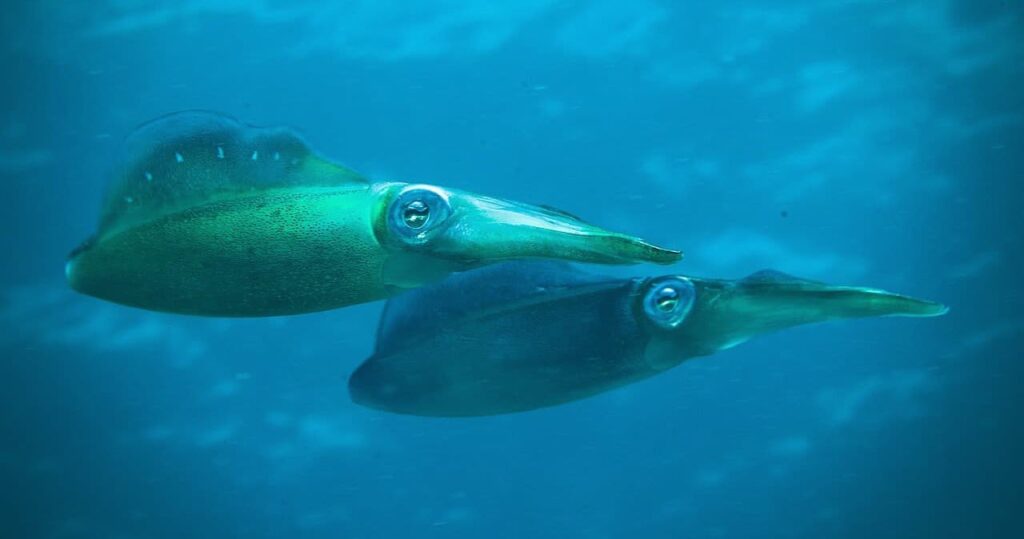
When it comes to squid fishing, lures are a great way to target these tasty cephalopods. Lures come in all shapes and sizes, so there’s something for every angler out there. The most popular type of lure used for Squid is the jig. Jigs are designed to imitate the movement of prey and can be weighted or unweighted, depending on your preference.
When selecting a squid jig, it is important to consider both size and weight depending on the environment you will be fishing in, as well as how deep below the surface you want your lure to go before reaching its target depth range. Generally speaking, smaller and lighter models work better for shallow waters, while larger and heavier ones are better suited for deeper depths.
Additionally, brighter colours tend to work better during daylight hours, while darker hues perform better under low-light conditions such as nighttime fishing trips. Finally, keep an eye out for special features like rattles which help draw attention from curious squids who might otherwise ignore more subtle offerings.
From using the right jig to choosing the best bait, there are a few things to consider when trying to catch Squid. Now let’s take a look at what’s the best rig for catching them.
How To Catch Squid – Final Thoughts
Conclusion

After reading this guide, you should now have a better understanding of how to catch Squid. You know the legal size and catch limit in NSW, what type of environment to look for when searching for Squid, the best time and gear to use when fishing for them, as well as some tips on technique. With all this knowledge under your belt, you’re ready to go out there and start catching some delicious squid!
So grab your rod and reel, bait up with the right lures or bait that we discussed earlier in this article, and find yourself a good spot near Sydney Harbour or any other local waters where you can try your luck at landing some squids – it’s time to get out there and give it a shot!
If you’re looking to take your fishing skills up a notch, then look no further than LandBasedAnglers.com! We offer tips and advice on how to catch Squid in both land-based waters and off the coast of Australia. Our resources are designed to help you become more knowledgeable about different types of bait, casting techniques, jigging methods, and much more. So if you want to improve your chances of reeling in some delicious cephalopods or just learn something new about the sport we love so much—head over now for all the information you need!
Good luck & tight lines!
How To Catch Squid – FAQ
Frequently Asked Questions – How To Catch Squid
What is the best way to catch Squid?
Squid can be caught in a variety of ways, depending on the species and the environment. For example, jigging is an effective method for catching Squid from boats or piers. This involves using a weighted jig that is lowered into the water and then quickly jerked up to attract Squid. Another popular technique is trolling with lures or baits such as small fish, shrimp, or squid strips.
When trolling near reefs or rocky areas, it’s important to use long lines, so you don’t snag on rocks or other obstacles. Finally, anglers can also cast nets over shallow waters to catch large numbers of Squid at once. Whichever method you choose, make sure your gear is well-maintained and appropriate for the species you are targeting.
Are Squid easy to catch?
Yes, Squid can be relatively easy to catch. They are attracted to light and can often be found in shallow waters near the shoreline. They tend to move around quickly, so using a jigging technique with a weighted lure is recommended for the best results.
Additionally, they are more active at night or during low-light conditions, making them easier to spot and target. With the right equipment and knowledge of their habits, catching Squid can be an enjoyable experience for any angler.
What is the best time of day to catch Squid?
The best time of day to catch Squid is during the evening and night hours. This is when they are most active, as they tend to be nocturnal creatures. The best way to target them is by using lights or jigs in shallow waters near reefs, rocks, and other structures where Squid congregate.
Additionally, it’s important to use bait that mimics their natural prey, such as shrimp or small fish. It’s also beneficial to move around often since Squid can be pretty skittish and may not stay in one spot for long periods of time.
You Might Also Like:
If you enjoyed reading this blog post on How To Catch Squid, you might also be interested in:
- 10 Best Fishing Chairs: Catch Your Breath and Catch Your Fish
- 8 Best Fishing Split Ring Pliers for Serious Anglers
- 8 Best Braid Scissors: Snip Your Way to Fishing Success
- Hooked on Comfort: 5 Best Fishing Stools You Need to Try
- How to Catch Murray Cod: 12 Masterful Tips For Success
- How to Catch Australian Bass | 13 Proven Tips by Pro Anglers
- 10 Best Fishing Pliers All Anglers Need in Their Tackle Box
- How to Catch Bonito: 13 Amazing Tips from Master Anglers
- How to Catch Mangrove Jack: 5 Tips for a Successful Fishing Trip
- 10 Best Waterproof Dry Bags to Keep Your Gear Safe and Dry
- 10 Best Fishing Gaffs for Landing Big Fish Quick & Easily
- 10 Best Waterproofing Sprays to Keep Your Gear Bone-Dry
- 14 Best Live Bait Buckets to Keep Your Fishing Game Strong
- 12 Best Fishing Backpacks for the Avid Angler in 2023
- Best Mono Fishing Line for 2023: Our Top 12 Trusted Picks
Tags:
#How To Catch Squid, #How To Catch Squid Guide, #How To Catch Squid Tips, #How To Catch Squid in Sydney, NSW, #How To Catch Squid for Beginners

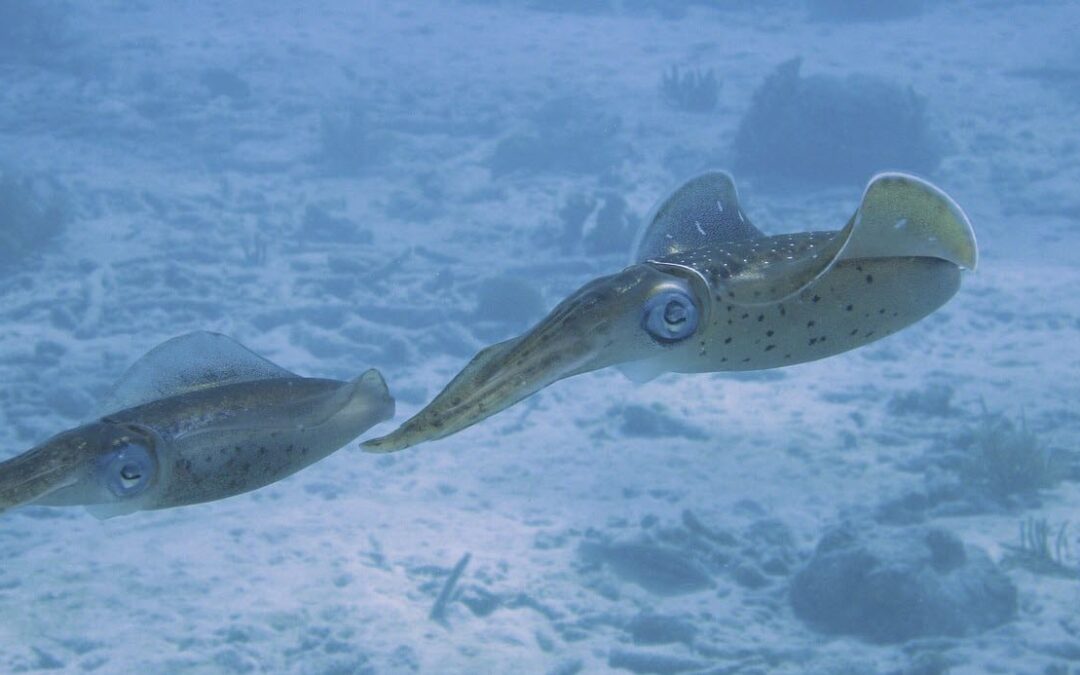
Recent Comments